Understanding Lamb Meat Safety
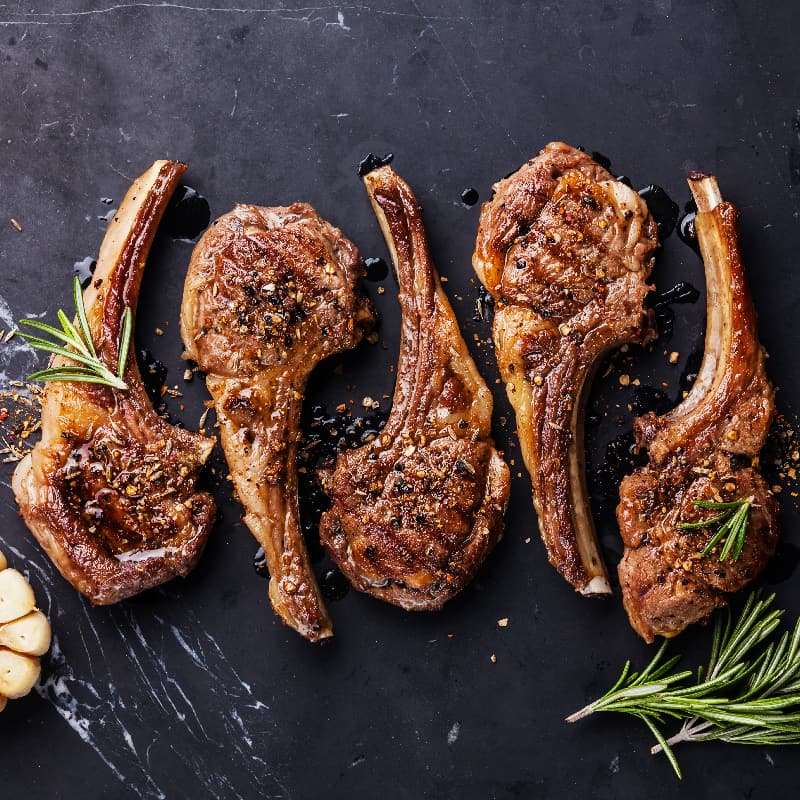
When it comes to enjoying lamb meat, safety is of utmost importance. To ensure the safety of the meat, it is crucial to be aware of a few key factors. First, it is important to select high-quality lamb from reputable sources. This ensures that you are starting with meat that has been handled and stored properly. Additionally, proper cooking techniques must be employed to eliminate any potential foodborne pathogens. Cooking lamb to the recommended temperatures is essential for food safety. By understanding and practicing lamb meat safety, you can confidently enjoy the delicacy of lamb while keeping yourself and your loved ones safe.
Lamb Meat Health Considerations
Lamb meat offers several health considerations to take into account. Firstly, it is a rich source of high-quality protein, which is essential for muscle growth, repair, and overall body function. Additionally, lamb meat contains various essential nutrients, such as iron, vitamin B12, zinc, and selenium. These nutrients play vital roles in supporting immune function, brain health, energy production, and maintaining healthy blood cells. Lamb meat also provides healthy fats, including omega-3 fatty acids, which are known for their anti-inflammatory properties. Incorporating lamb into a balanced diet can contribute to overall health and well-being.
Risks Of Eating Lamb Rare
Eating lamb meat that is cooked rare poses certain risks to consider. The main concern is the potential presence of harmful bacteria, such as Salmonella and E. coli, which can cause foodborne illnesses. These bacteria are typically eliminated through thorough cooking. Consuming undercooked lamb increases the risk of bacterial contamination, leading to symptoms like diarrhea, abdominal pain, and vomiting. Pregnant women, young children, the elderly, and individuals with weakened immune systems are particularly susceptible. Therefore, it is important to ensure that lamb is cooked to a safe internal temperature to minimize the risk of foodborne illnesses.
Benefits Of Eating Lamb Rare
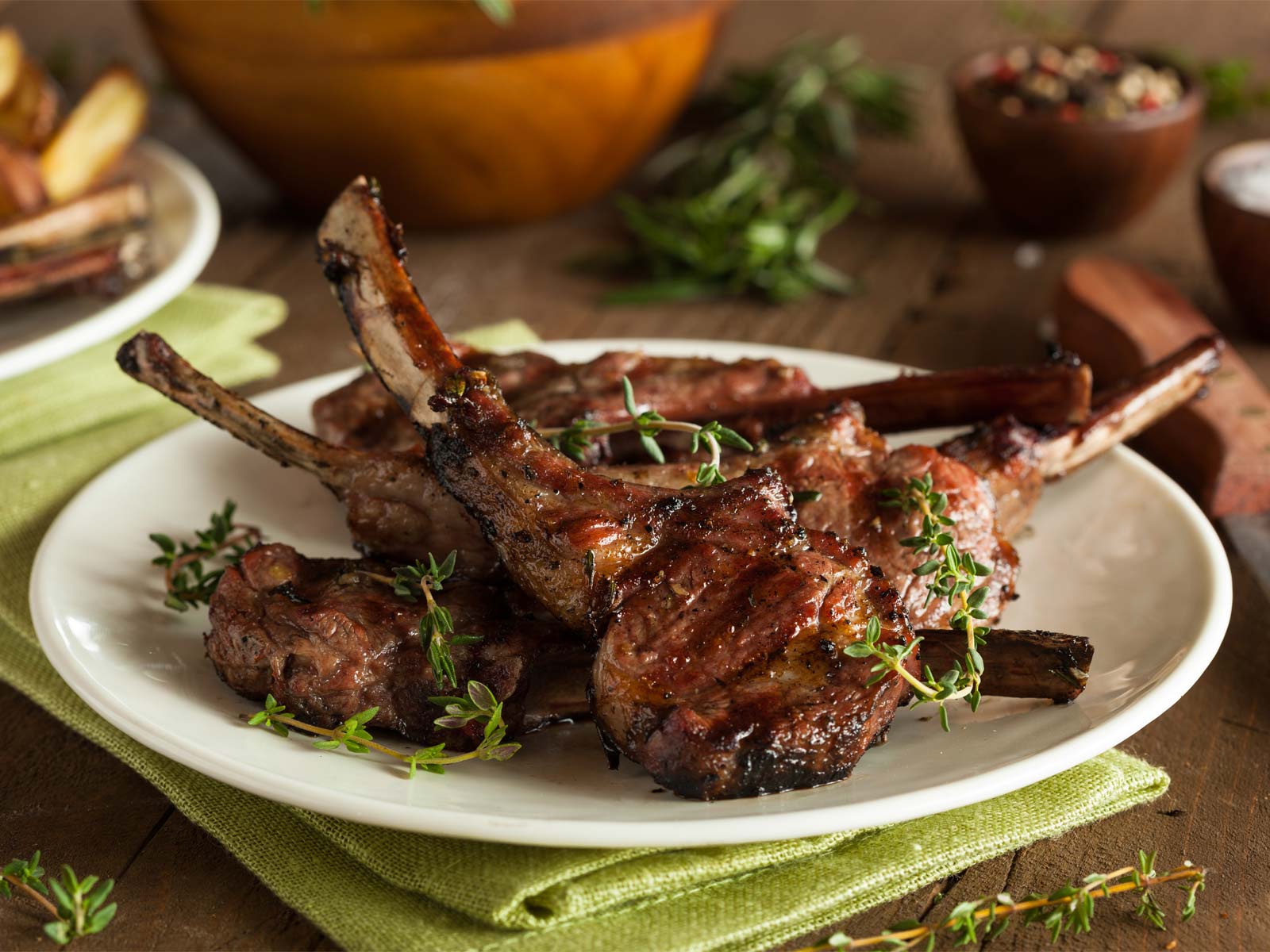
Eating lamb rare can offer unique benefits in terms of flavor and nutrient retention. When cooked rare, lamb retains its natural juices, resulting in a tender and juicy texture. This enhances the overall taste experience, as the meat is less cooked and more succulent. Additionally, cooking lamb to rare or medium-rare temperatures helps preserve the nutritional value of the meat, including essential vitamins and minerals. Consuming rare lamb also allows for the appreciation of the meat’s natural flavors, showcasing the quality and freshness of the cut. So, for those looking to enjoy a flavorful and nutritious lamb dish, eating it rare can be a delightful choice.
Flavor And Texture Profile
When lamb is cooked rare, it offers a distinct flavor and texture profile that sets it apart from well-done preparations. The natural juices and tenderness of rare lamb create a melt-in-your-mouth experience that is unmatched. The meat is succulent and juicy, with a delicate and slightly gamey taste. Eating lamb rare allows you to fully appreciate the quality and freshness of the meat, showcasing its unique flavors. The combination of tender texture and flavorful taste makes rare lamb a delicacy that is worth savoring. So, for those seeking a memorable culinary experience, exploring the flavor and texture of rare lamb can be immensely satisfying.
Retention Of Nutrients In Rare Lamb
When lamb is cooked rare, it retains more of its natural nutrients compared to well-done preparations. The quick cooking time preserves the vitamins, minerals, and proteins found in the meat, ensuring that you benefit from their nutritional value. Lamb is a rich source of essential nutrients like iron, zinc, selenium, and B vitamins. These nutrients play a crucial role in maintaining overall health and well-being. By eating rare lamb, you can enjoy a nutrient-dense meal that supports optimal nutrition and provides the body with the necessary fuel for everyday activities.
Tips For Safely Eating Lamb Rare
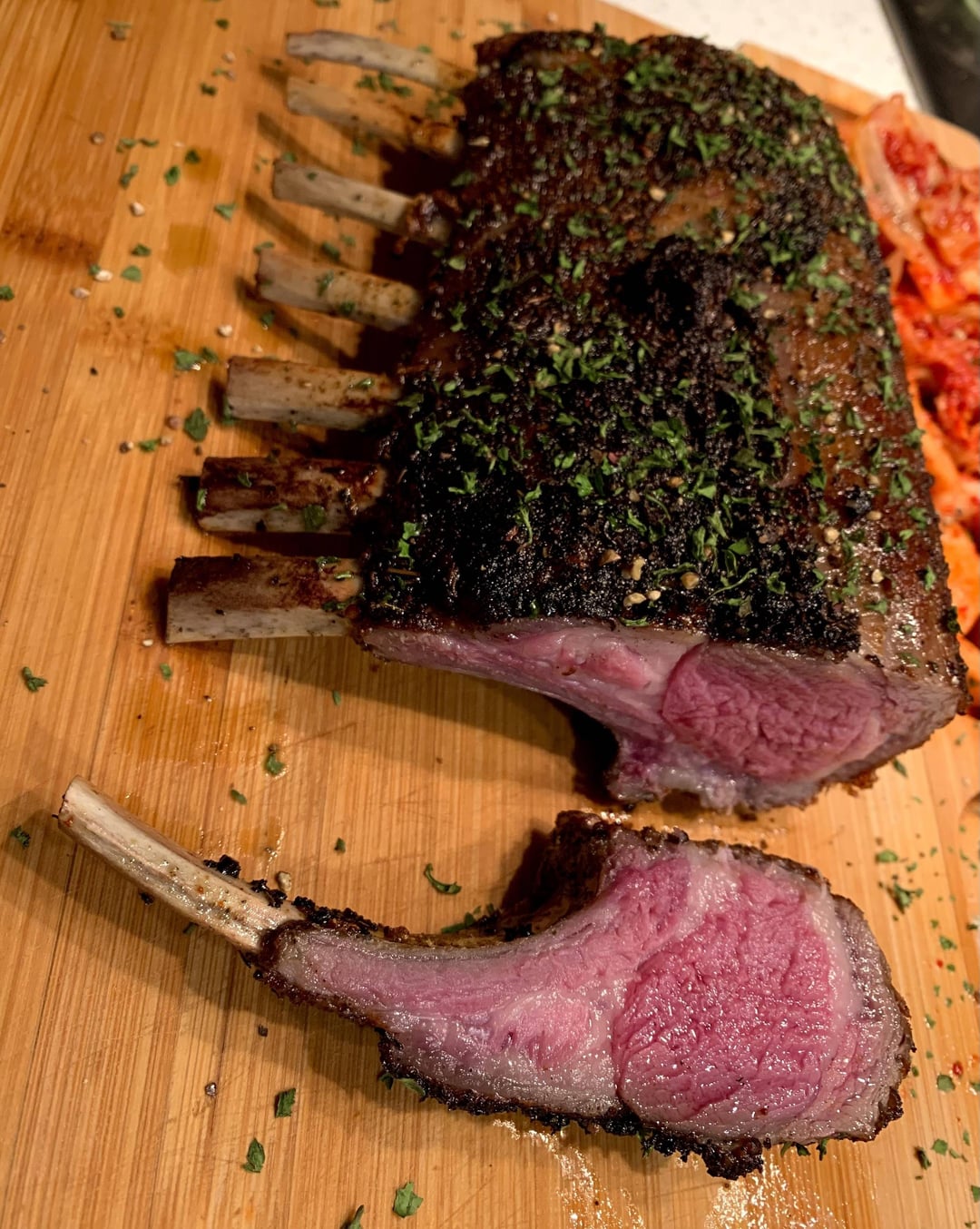
When enjoying lamb rare, there are a few important tips to keep in mind to ensure safety. Firstly, always select high-quality lamb from reputable sources to minimize the risk of foodborne illness. Secondly, make sure to properly cook the lamb by searing the outer surface to kill any potential bacteria. Additionally, use a meat thermometer to ensure the internal temperature reaches at least 60°C for rare doneness. Lastly, practice good food hygiene by keeping raw lamb separate from other foods and properly cleaning all utensils and surfaces used in preparation. By following these tips, you can safely enjoy the unique flavors of rare lamb.
Selecting High-quality Lamb
When it comes to selecting high-quality lamb for rare consumption, there are a few factors to consider. Firstly, choose lamb from reputable sources that prioritize animal welfare and sustainable farming practices. Look for labels such as organic or grass-fed, which indicate higher quality. Additionally, inspect the meat for a vibrant reddish-pink color and firm texture, as this indicates freshness. Lastly, consider purchasing lamb from local farmers or specialty butcher shops, as they often have a closer relationship with their suppliers and can provide more detailed information about the lamb’s origin. By selecting high-quality lamb, you can ensure a safe and delicious dining experience.
Proper Cooking Techniques
Proper cooking techniques are essential when it comes to safely enjoying rare lamb. Firstly, it is crucial to thoroughly sear the outer surface of the meat to kill any harmful bacteria. This can be done by quickly frying or grilling the lamb at high heat. Secondly, using a meat thermometer is highly recommended to ensure that the internal temperature reaches a safe level. For lamb to be considered rare, the internal temperature should be around 125°F (52°C). By following these cooking techniques, you can enjoy the delectable taste of rare lamb while minimizing any potential health risks.
Common Misconceptions About Eating Lamb Rare
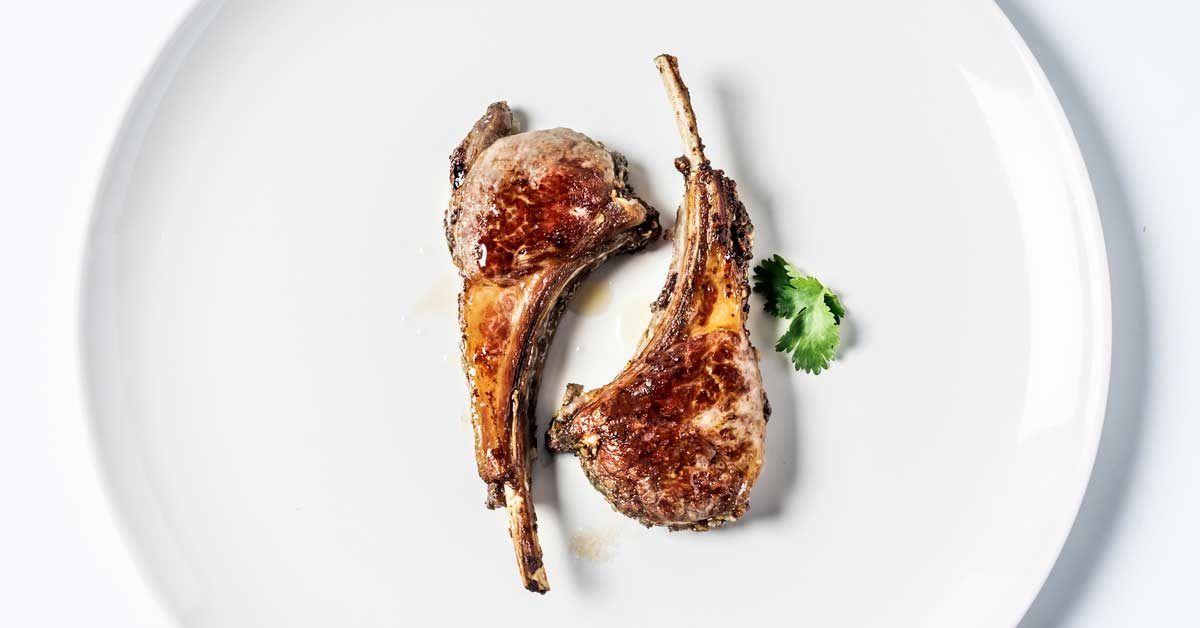
There are several common misconceptions about eating lamb rare that need to be addressed. Firstly, it is a myth that lamb must be cooked until well-done to be safe to eat. As long as proper cooking techniques are followed, rare lamb can be enjoyed safely. Secondly, there may be concerns about bacteria and parasites in rare lamb. However, thorough searing and reaching the recommended internal temperature can effectively kill any harmful microorganisms. By debunking these misconceptions, it becomes clear that rare lamb can be a delicious and safe delicacy to enjoy.
Myth: Lamb Must Be Cooked Well-done
There is a popular myth that lamb meat must be cooked well-done in order to be safe to eat. However, this is not entirely true. While it is important to ensure that lamb is cooked to a safe internal temperature to kill any harmful bacteria or parasites, it doesn’t have to be cooked to well-done. Cooking lamb to well-done can result in a drier and less tender texture, and it may lose some of its natural flavors. By properly searing the lamb and reaching the recommended internal temperature, rare lamb can be enjoyed safely while still maintaining its delicious taste and tenderness.
Clarifying Safety Concerns About Rare Lamb
When it comes to eating lamb rare, there are certain safety concerns that need to be addressed. While rare lamb can be enjoyed safely, it is important to take some precautions to minimize any potential risks. One concern is the presence of harmful bacteria or parasites in raw or undercooked lamb. To ensure safety, it is crucial to properly source high-quality lamb and handle it with care during preparation. Additionally, cooking techniques such as searing and reaching the recommended internal temperature can effectively eliminate any potential pathogens. By following these guidelines, you can confidently enjoy the deliciousness of rare lamb while keeping health risks at bay.
Alternatives To Eating Lamb Rare
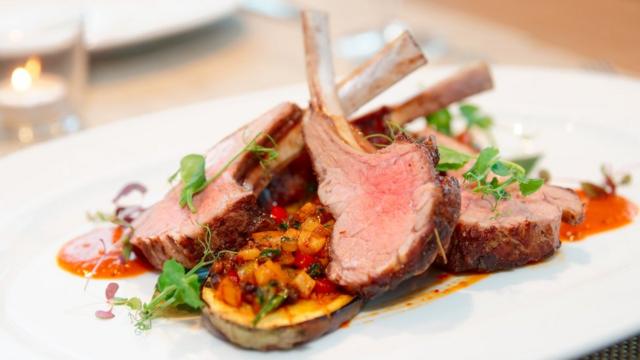
When it comes to enjoying lamb, there are alternatives to eating it rare. One option is to cook the lamb to recommended temperatures, ensuring it is fully cooked and safe to eat. This method guarantees that any potential bacteria or parasites are eliminated. Another alternative is to enjoy lamb cooked to medium-rare or medium, which still allows for a tender and juicy texture while reducing the risk of raw meat. By exploring different temperatures and culinary approaches to lamb dish preparation, you can find alternatives that suit your taste preferences while prioritizing safety.
Cooking Lamb To Recommended Temperatures
When cooking lamb, it is important to follow recommended temperature guidelines to ensure it is safe to eat. The target internal cooking temperature for rare lamb is 120°F (49°C), and it should be rested for at least 5 minutes before serving. This allows the meat to retain its juices and flavors. However, it is crucial to note that not all cuts of lamb can be cooked to rare. Ground lamb, lamb burgers, lamb kebabs, and bone-in lamb cuts, such as leg or shoulder, should be cooked to a higher temperature to eliminate any potential bacteria or parasites.
Enjoying Lamb Medium-rare Or Medium
When it comes to enjoying lamb, some people prefer it cooked to a medium-rare or medium level of doneness. This allows the meat to remain tender and juicy while still providing a slightly cooked texture. By cooking lamb to a medium-rare temperature of around 135°F (57°C) or a medium temperature of 145°F (63°C), you can achieve a balance between the desired doneness and food safety. Keep in mind that certain cuts of lamb, such as tenderloin or loin chops, are well-suited for cooking to these temperatures while still maintaining their delectable flavors. Remember to use a meat thermometer to ensure that the lamb reaches the appropriate internal temperature for your desired level of doneness.
Conclusion

In conclusion, it is safe to enjoy lamb cooked to a rare level of doneness. By following proper food safety practices and selecting high-quality cuts of lamb, individuals can savor the unique flavors and tender texture of rare lamb. The target internal temperature for rare lamb should be 120°F, with a resting period of 5 minutes to allow the juices to redistribute. Remember that any lamb cut that can be cut and sliced can be cooked to rare. So, go ahead and indulge in the delicacy of rare lamb, knowing that you are both enjoying a flavorful experience and prioritizing food safety.
Balancing Preference And Safety When Eating Lamb Rare
When it comes to enjoying lamb rare, it is important to find a balance between personal preference and food safety. Some individuals may prefer the tender texture and unique flavors of rare lamb, while others may prioritize the safety of fully cooked meat. By following proper cooking techniques and selecting high-quality cuts of lamb, it is possible to safely indulge in rare lamb. However, it is crucial to ensure that the outer surface is thoroughly seared to kill any potential bacteria. Ultimately, it is up to each individual to make a decision based on their own tastes and comfort level with consuming rare meat.
Exploring Different Culinary Approaches To Lamb Dish Preparation
When it comes to preparing lamb dishes, there are various culinary approaches to consider. One popular method is grilling lamb chops or racks, which adds a smoky flavor and a delicious charred exterior. Another option is to slow cook lamb, which results in tender and melt-in-your-mouth meat. Moroccan cuisine often incorporates lamb in tagines, slow-cooked stews with aromatic spices. For those who prefer a Mediterranean twist, marinating lamb with herbs such as rosemary and thyme can enhance the natural flavors. Ultimately, exploring different cooking techniques and flavor combinations allows you to create unique and flavorful lamb dishes to satisfy your taste buds.
FAQ About Enjoying Lamb’s Delicacy
Q: Can you eat lamb rare?
A: Yes, lamb can be safely consumed rare as long as proper cooking techniques are followed.
Q: What are the recommended cooking temperatures for lamb?
A: The recommended cooking temperatures for lamb are 145°F (63°C) for medium-rare, 160°F (71°C) for medium, and 170°F (77°C) for well-done.
Q: Are there any risks associated with eating rare lamb?
A: Eating rare lamb may pose a risk of foodborne illnesses if the meat is not handled and cooked properly. It is important to ensure that the lamb reaches the recommended internal temperature.
Q: How can I ensure that my lamb is safe to eat rare?
A: To safely enjoy rare lamb, it is crucial to purchase high-quality meat from reputable sources, practice proper food handling and storage, and use a meat thermometer to check for the desired doneness.
Q: What are the benefits of eating lamb rare?
A: Eating lamb rare can preserve the natural flavors and tenderness of the meat, providing a unique culinary experience for those who enjoy delicately cooked meats.
Q: Can pregnant women and young children eat rare lamb?
A: It is generally recommended for pregnant women, young children, and individuals with weakened immune systems to avoid consuming rare meat, including lamb, to reduce the risk of foodborne illnesses.

Johnny Knuckles Knock-out BBQ is a culinary haven for barbecue enthusiasts, offering a fusion of traditional BBQ and tantalizing street fare. Our secret to delivering mouthwatering dishes lies in our meticulous preparation process. Each cut of meat is lovingly hand-rubbed and slow-smoked over 100% hardwood, creating a symphony of flavors that will leave your taste buds dancing. Whether planning a special event or simply craving an unforgettable meal, Johnny Knuckles Knock-out BBQ is here to elevate your dining experience. Our catering services are designed to bring the sizzle and aroma of our delectable BBQ to your event, ensuring that every guest leaves with a full belly and a smile.